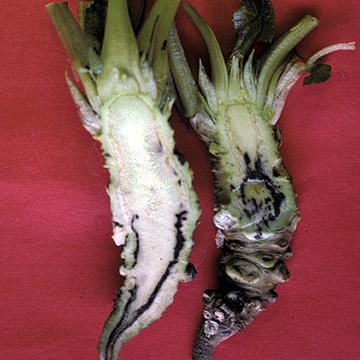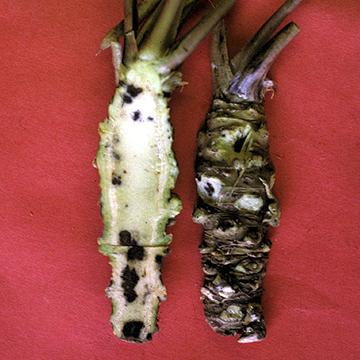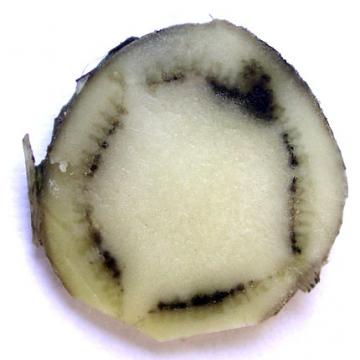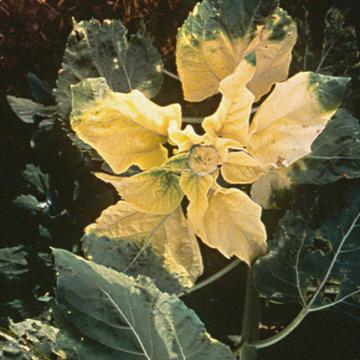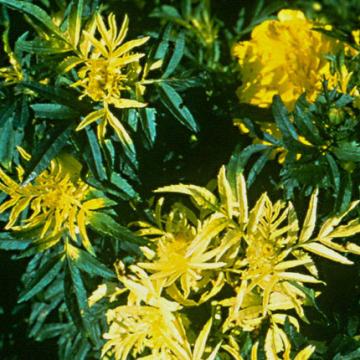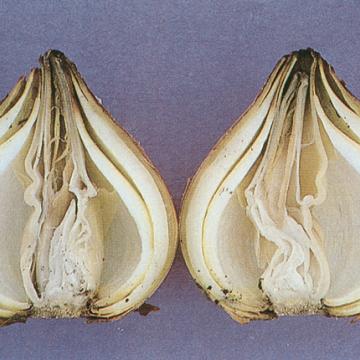DISEASE: Bacterial soft rot
HOST: Wasabi (Japanese horseradish)
Longitudinal sections of diseased rhizomes with discolored vascular tissues.
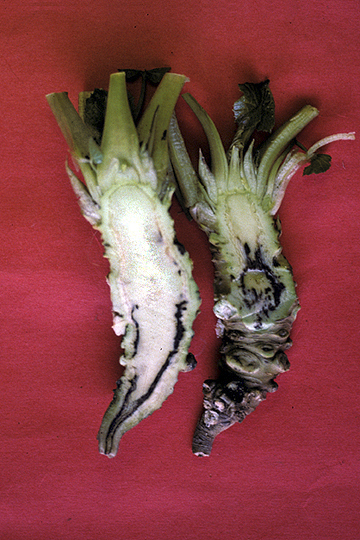
Bacterial soft rot | Wasabi (Japanese horseradish)
DISEASE: Bacterial soft rot
HOST: Wasabi (Japanese horseradish) (Wasabia japonica)
PATHOGEN: Pectobacterium wasabiae
PATHOGEN SYNONYM: Erwinia carotovora subsp. wasabiae
SOURCE: M. Goto
DISEASE: Bacterial soft rot
HOST: Wasabi (Japanese horseradish)
Longitudinal section of rhizome with discolored vascular bundles (left), and rhizome with external symptoms (right).
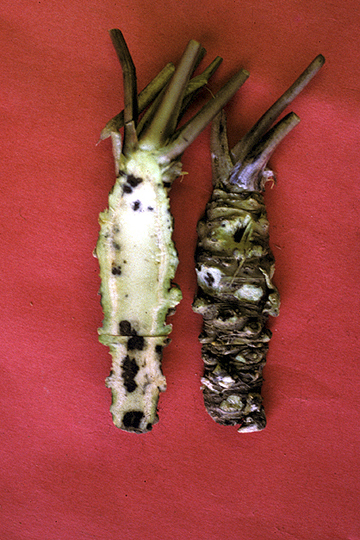
Bacterial soft rot | Wasabi (Japanese horseradish)
DISEASE: Bacterial soft rot
HOST: Wasabi (Japanese horseradish) (Wasabia japonica)
PATHOGEN: Pectobacterium wasabiae
PATHOGEN SYNONYM: Erwinia carotovora subsp. wasabiae
SOURCE: M. Goto
DISEASE: Bacterial soft rot
HOST: Wasabi (Japanese horseradish)
Cross section of rhizome with dark, infected vascular bundles.

Bacterial soft rot | Wasabi (Japanese horseradish)
DISEASE: Bacterial soft rot
HOST: Wasabi (Japanese horseradish) (Wasabia japonica)
PATHOGEN: Pectobacterium wasabiae
PATHOGEN SYNONYM: Erwinia carotovora subsp. wasabiae
SOURCE: G. Rodriguez
DISEASE: Pseudomonas leaf spot
HOST: Marigold
Marigolds with yellow apical chlorosis attributed to toxin production by the pathogen.
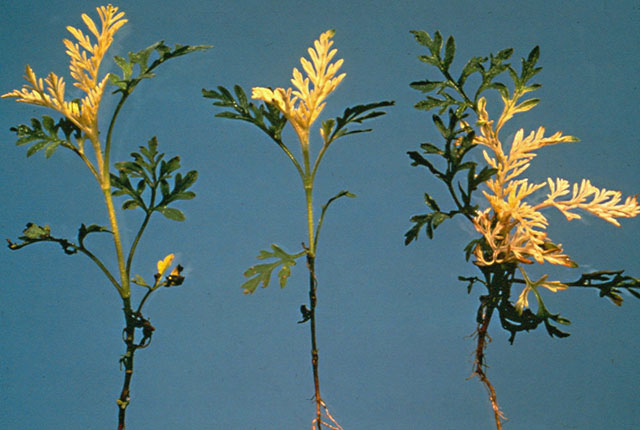
Pseudomonas leaf spot | Marigold
DISEASE: Pseudomonas leaf spot
HOST: Marigold (Tagetes erecta)
PATHOGEN: Pseudomonas syringae pv. tagetis
SOURCE: R. Durbin
DISEASE: Pseudomonas leaf spot
HOST: Marigold
Chlorotic leaves with total loss of chlorophyll. Disease is also known as toxic chlorosis.
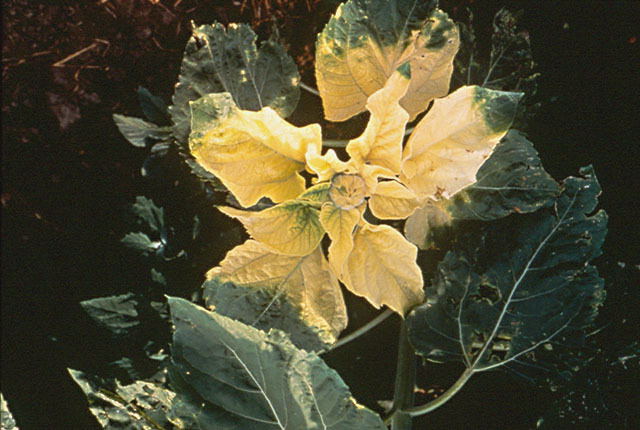
Pseudomonas leaf spot | Marigold
DISEASE: Pseudomonas leaf spot
HOST: Marigold (Tagetes erecta)
PATHOGEN: Pseudomonas syringae pv. tagetis
SOURCE: R. Durbin
DISEASE: Pseudomonas leaf spot
HOST: Marigold
Plants with bright yellow apical chlorosis.
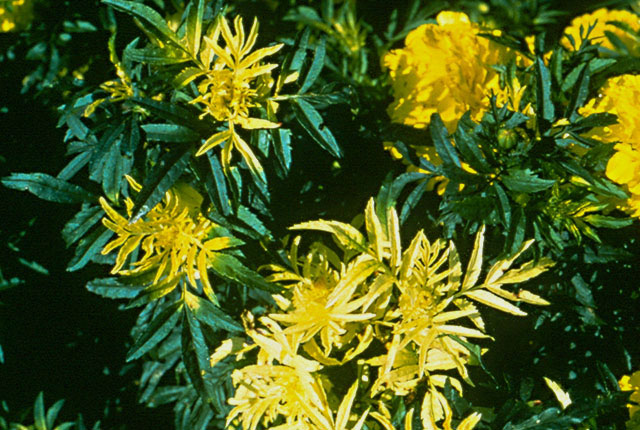
Pseudomonas leaf spot | Marigold
DISEASE: Pseudomonas leaf spot
HOST: Marigold (Tagetes patula)
PATHOGEN: Pseudomonas syringae pv. tagetis
SOURCE: R. Durbin
DISEASE: Slippery skin
HOST: Onion
Rot progresses from the top of infected scales and eventually internal tissues rot. In early stages, the only external symptoms may be softening of the neck.
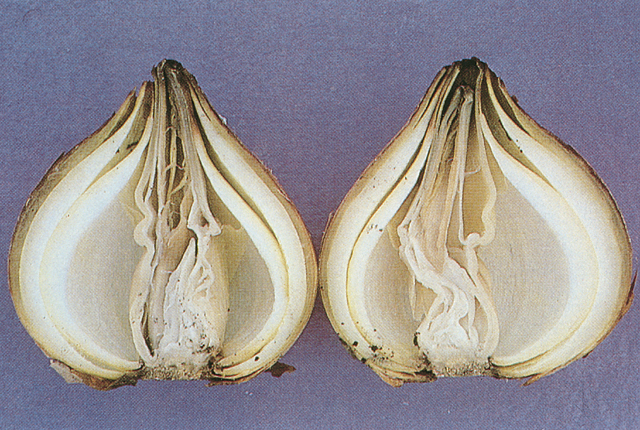
Slippery skin | Onion
DISEASE: Slippery skin
HOST: Onion (Allium cepa)
PATHOGEN: Burkholderia gladioli pv. alliicola
PATHOGEN SYNONYM: Pseudomonas gladioli pv. alliicola
SOURCE: H. Schwartz


